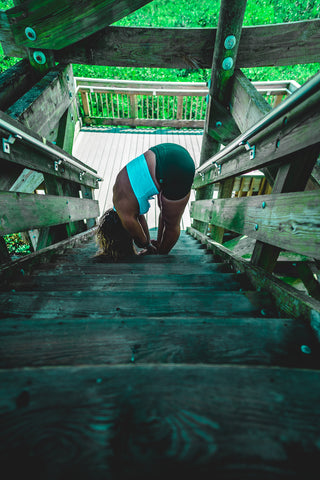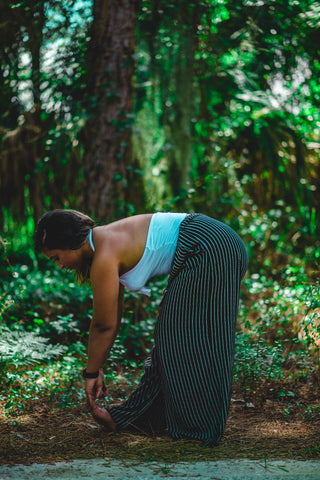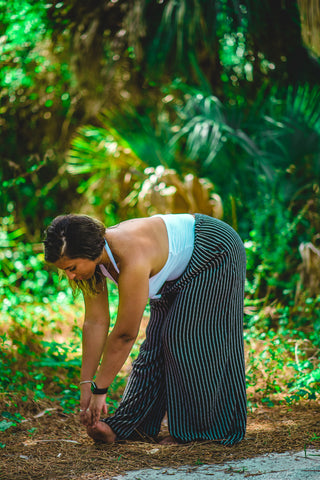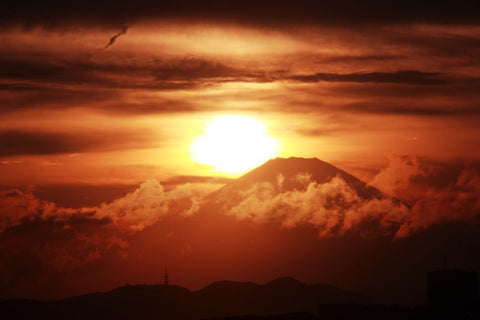Scavenger Hunt Bingo – 14ers Edition
Scavenger Hunt Bingo for hiking Colorado 14ers
Continue readingYour cart is currently empty!

Scavenger Hunt Bingo for hiking Colorado 14ers
Continue readingEveryone has gone through pain after a long hike or an endurance activity. The way our bodies feel after an adventurous activity can set standardsfor how we need to treat it before and after we participate in these endeavors. Consider how your body feels. Yoga and meditation can help you in preparation for a big day of hiking.
Taking the time to become more mindful of our bodies before hiking will be critical to how we feel afterwards. Below, I have comprised some basic poses and meditations that really help to make space within our bodies and minds before strenuous activities.
5 Poses for Success:

Givenchy Jones Photography

Givenchy Jones Photography

Givenchy Jones Photography

Givenchy Jones Photography

Givenchy Jones Photography

Givenchy Jones Photography

Givenchy Jones Photography
Considerations: Hold the poses for as long as needed for your body individually. Use the ground or whatever is around you for support if needed. There is no “set” place you should feel a stretch, you feel it where your body needs it. Have fun with this—you’re taking the time to prepare for a great hike!

Givenchy Jones Photography
Meditation:
Take 5 minutes before your hike to think about the reason why you are there that day. Listen to the sounds around you and become immersed in your position within the world.
___________________________________________________________________________
It is important to take time for ourselves before strenuous activities. Yoga helps us to find our balance to ensure our bodies are ready for the journey ahead. Building these tools (yoga poses and meditation) into our schedule can be fundamental to our success. Try a little love for your body before a hike and see how you feel afterwards!
Namaste | Alexis
Alexis is the Founder of Aesthetic Chaos, a blog that focuses on adventure and well-being. Alexis is currently obtaining her 200-yoga teacher training certification at St. Pete Yoga, a Yoga Alliance registered yoga school. You can visit her website at aestheticchaos.net.
Photos by Givenchy Jones Photography
Continue readingThere are many ways to celebrate the New Year around the world. And…there are a surprising number of similarities – family and friends, good food, fireworks, reflection, etc.
In East Asia, many celebrate hope and renewal by watching the sunrise on New Year’s Day. This is typically done in large groups on mountaintops, beaches or scenic valleys.
In Japan (and other mountainous countries of East Asia), large groups will endure the bitter cold to summit a mountain and greet the rising sun. It is called Hatsuhinode, and is Japanese for the welcoming of the first sunrise of the New Year.

A group around Colorado Springs in southwest Colorado has a similar practice of enduring the cold to hike to the top of a mountain. The group is called the AdAmAn Club (http://adaman.org). Rather than watch the sunrise, the group’s purpose is to light fireworks at the summit at midnight.
The AdAmAn Club was formed in 1923 after a group of 5 men dubbed “The Frozen Five” decided to hike to the top of Pikes Peak to set off fireworks on New Year’s Eve. The five men were Fred and Ed Morath, Fred Barr, Willis Magee and Harry Standley.
So it was, that on December 31st, 1922, the Frozen Five created “fire on the mountaintop” that could be seen for miles around and created quite a stir. Two of the original five, brothers Fred and Ed Morath suggested the name “AdAmAn” for a rule that only one new member could be added each year. The tradition has lasted for over 90 years and the club gets bigger.
Pikes Peak is “America’s Mountain”, one of the 53 Colorado 14ers (peaks above 14,000 feet) and tallest of the southern Front Range at 14,115 feet. Pikes is named from explorer/adventurer Zebulon Pike, who interestingly enough, did not summit the peak. (Side note: This author thinks Zebulon is such a cool name, that if he had another son, he’d seriously consider naming him Zebulon.)
The summit is accessible by a cog railway, a paved road and Barr hiking trail. Pikes Peak is only one of two 14ers accessible by paved road. The other is Mount Evans.
Pikes Peak earns the moniker “America’s Mountain” from its’ sheer popularity - hosting tourists, climbers, researchers and racing fans. The Pikes Peak road is famous for the International Pikes Peak Hill Climb motor race, USA Cycling Hill Climb National Championships and Pikes Peak Cycling Hill Climb.
The icy Barr Trail is the eastern route the AdAmAn Club takes to reach the top and is accessible to the public for climbing most of the year. Fireworks in the splendor that is America’s Mountain celebrates the majesty of our great country and gives fitting backdrop to occasion. Happy New Year!
Continue readingThe recent eruptions in Hawaii with Mount Kilauea have a lot of people thinking about volcanoes lately and for good reason. Over 2,000 people are being evacuated in Hawaii and scientists are wondering if the rumblings under foot could be grander in scope.
Kilauea sits in the midst of the Ring of Fire, a horseshoe-shaped belt of volcanic activity that stretches over 25,000 miles in the Pacific basin. [i]Roughly 450 volcanoes are in the Ring of Fire comprising of 75% of the world’s active and dormant volcanoes.
If the Hawaii activity were a symptom of a systemic issue, folks in the Pacific Northwest are worried. There are 13 volcanoes on the West Coast including Mounts Rainier and Hood. We only have to look back to 1980 when Mount ST Helens tragically blew, killing dozens and spreading ash across much of the United States. [ii]
So far, that fear is allayed, as scientists have not detected any abnormal readings of increased volcanic activity on the West Coast. This gives any hiker pause when climbing a mountain that might be active. It’s like climbing a rickety ladder - you just don’t feel safe.
Many of the mountains we climb are in fact volcanic in origin. Of the 7 Summits, two are volcanic – Kilimanjaro (19,341’) in Africa and Elbrus (18,510’) in Russia.
 (Kilimanjaro – Trekkinghero.com)
(Kilimanjaro – Trekkinghero.com)
Volcanoes fall into one of three statuses: Active, dormant and extinct. The later not having activity for over 10,000 years, so that’s comforting.
Now that you know about volcanic mountains, what are the other types of mountains? Not all mountains are created the equal. Each mountain and range has a different story. Pressure, type of strata (rock), erosion, volcanic forces all play a role. In addition to volcanic mountains, there are four other types: fold, fault-block, plateau and dome.
Fold mountains are the most common. They are caused when tectonic plates crash into each other. Huge amounts of pressure and friction create these huge monuments of our planet. They are the largest in size and form long ranges. The best examples are the Rocky Mountains and the Himalayas.

(Rocky Mountains – WikiTravel.org)
Fault-block mountains are formed where a fault or crack pushes up rocks. On one side of the fault, the earth drops down sharply. On this side of the mountain, the sides are often sheer drops – fun for rock climbers. The Sierra Nevada range is a prime example.

(Sierra Nevadas – Phys.org)
Plateau mountains and dome mountains form with the help of mother nature (mainly rain) and billions of years of erosion. Plateau mountains are formed usually near fault-block mountains and have a flat top. The Catskills of New York and mountains in New Zealand are plateau mountains.

(Matiri Range, New Zealand – Teara.govt.nz)
Dome mountains like plateau mountains are formed by magma pushing up. However unlike plateau mountains, the magma dome is what is seen, not the rock above it as in a plateau. Over billions of years, erosion wears away around the base of the dome. The Adirondacks of New York are dome mountains. [iii]

(Algonquin Peak, Adirondacks – Peakbagger.com)
Although most mountains that are in danger of exploding anytime soon will have clearly posted warnings, it’s good to know the differences on how one mountain was formed versus the next one. It gives you a better appreciation when you are standing on top.
Sources:
[i]https://en.wikipedia.org/wiki/Ring_of_Fire
[ii]http://epaper.dallasnews.com/infinity/article_popover_share.aspx?guid=2e7a5d6a-6668-47ad-b6dd-99f65ad03854
[iii]https://www.universetoday.com/29771/types-of-mountains/
Continue readingA quick Google search will yield tons of information on preparing for your first Fourteener. Expert retailers like REI or EMS will no doubt promote their best water-wicking, insulating, ultra-light, GPS-enabled, diode-emitting gear. Do your homework, heed their advice, shop around and do NOT come ill prepared. For that purpose, I’ll share my story and a list of essentials I hope you find useful.
My first Colorado Fourteener was Blanca Peak in the Sangre de Cristo range. I had no idea how brutal the mountain could be. You see, I grew up in New England and did my share of hiking and camping. What the hilly woods of New England couldn’t offer, I sought out by travelling to get my “nature fill”: high desert, beaches, rafting trips, canoeing northern lakes, a week in the Montana Wind River Range, etc.
What I didn’t realize is that I’ve never been this high up before. At 14,000 feet you have 1/3 less oxygen. Also, these mountains are so massive that they command their own weather.
That first trip was a disaster. My hiking mate Kevin (a Houston-based flatlander) was experiencing the Fourteeners for the first time too. Let’s just say, it was his first time in the mountains, let alone trying to bag a Fourteener. We hadn’t made it half way to base camp when exhaustion crept over Kevin. Happy to help in my delirious pre-dawn state, I offered to take Kevin’s pack. It was heavy to say the least. After about an hour of lugging his gear, I had to stop and question, “What in the world did you pack?”(Expletives omitted). Among a laundry list of things NOT to pack, Kevin opted for canned goods reminiscent of his childhood, the chief culprit being a few cans of Beenie Weenies.
Once I was on the mountain the next day, and a mere 500 feet from the summit, I got shellacked by the cold and damp wind. We were running late and it was into the afternoon as clouds gathered around the summit and the risk of lightning strikes seemed imminent. No gloves, no hat and a thin cotton-lined nylon jacket with a long-sleeve shirt were all that protected my core. It wasn’t enough. I was risking frostbite AND hypothermia. I had to turn back.
I’ve since returned to climb Blanca and some other mountains over the years. Here are some tips I learned (the hard way) and essentials to pack:
Tips:
We’ve all been there. That slight feeling of panic when you wonder if you are off the trail, or worse…lost! Then, like seeing an old friend for the first time in years, you spy the next rock cairn just beyond the next bend. Relief.
These piles of rocks are all too common above treeline. They are made by man (and by man I mean men and women) to help guide us and keep us on the right path. We know them, but what do we know about them? The word cairn derives from the Scottish Gaelic word: càrn (plural càirn). Cairns are found all over the world: mountaintops, desserts, uplands, seacoasts, waterways and tundra. In some cultures they are used for burial purposes. Mostly, they are simply beacons to guide us in terrain devoid of helpful visuals – signposts, trees, etc. Where a trail can be clearly visible in summer, a fresh snowfall is quick to obscure your path in winter.
For the most part, cairns should be left alone. Depending on what part of the world you find yourself, that cairn may be sacred. Cairns for religious or burial purposes are many times marked with banners, flags, paint and offerings. In Norse Greenland, cairns were used for hunting. They marked a game driving "lane", used to direct reindeer towards a game jump. Much in the same way the Plains tribes of the United States drove buffalo off cliffs.
In Scottish Highland lore, clan members would place a stone in a pile before a battle. Those who survived the battle returned and removed a stone from the pile. The remaining stones were built into a cairn to honor the dead.
The Colorado Fourteeners Initiative (CFI) is a group who has seen more than a few cairns in their efforts to preserve the alpine trail systems. “In some instances cairns are constructed on a minimal level and carefully placed in areas where the trail is easily lost and there is a risk of straying off the trail and onto the fragile plant life”, says the CFI. “Conversely, cairns are taken down that are misleading and send users off the intended route; or that are unnecessarily placed on the trail, and therefore interrupting the health of the natural ecosystem of the peak and the integrity of the climb.”
If you find that a cairn is in bad shape, by all means stop and stack a few rocks. Show that mountain that you cairn.
As if cairn wasn’t hard enough to pronounce the first time, impress your friends with some other ways to say it: